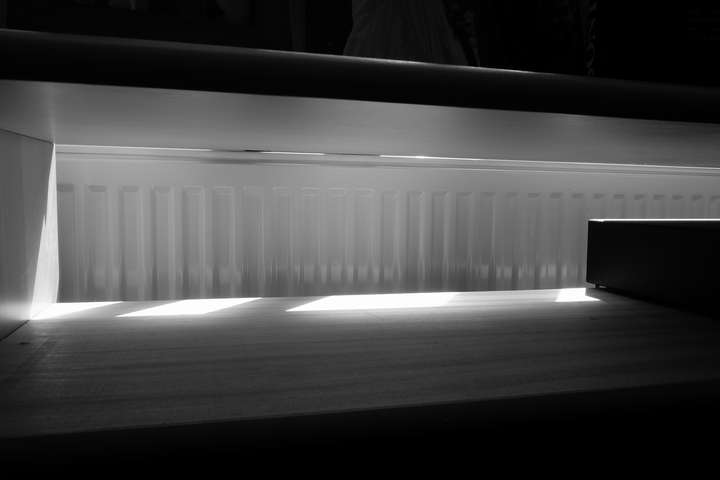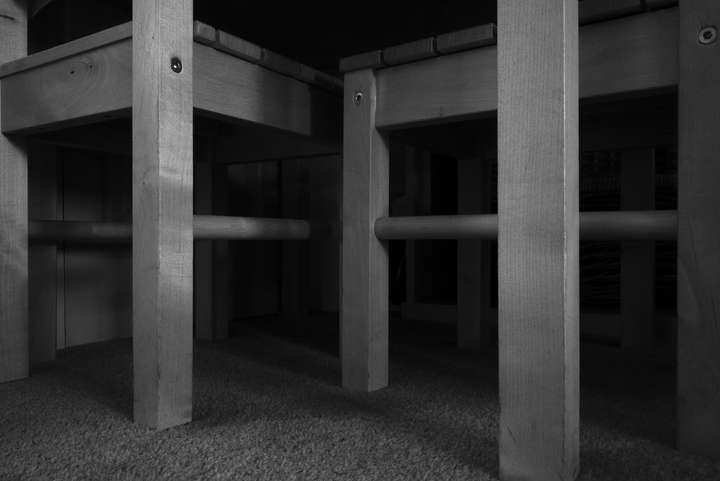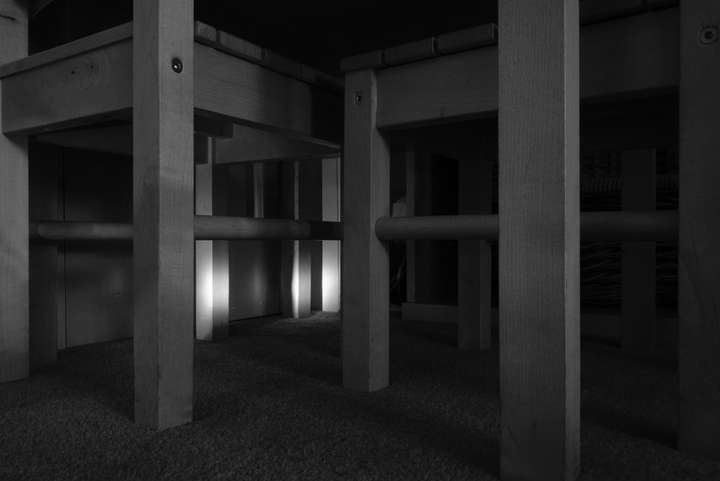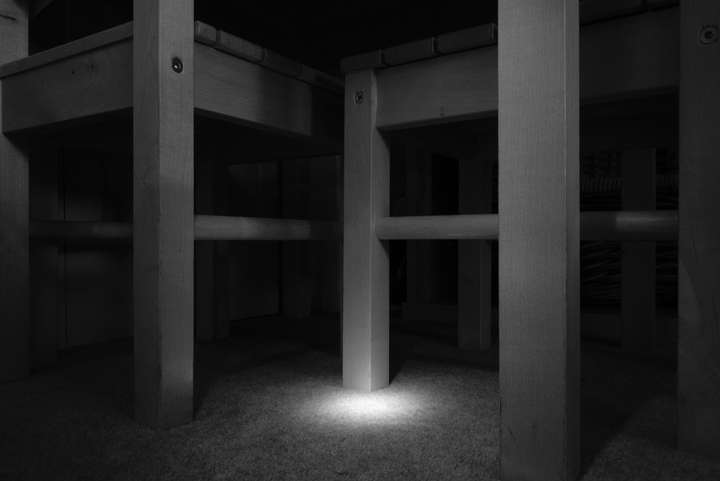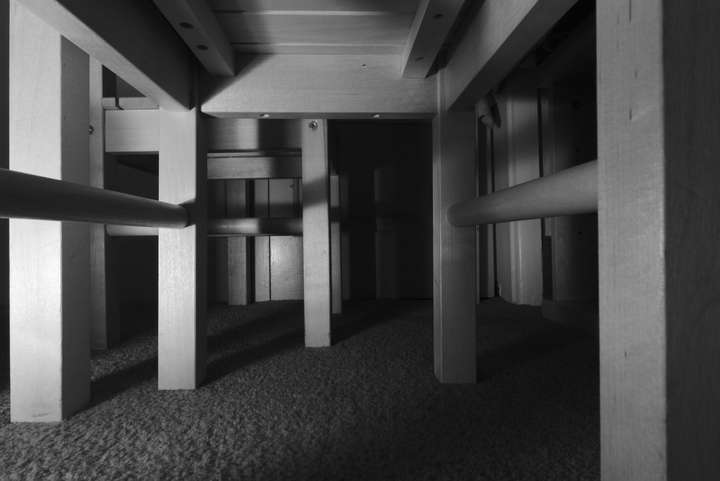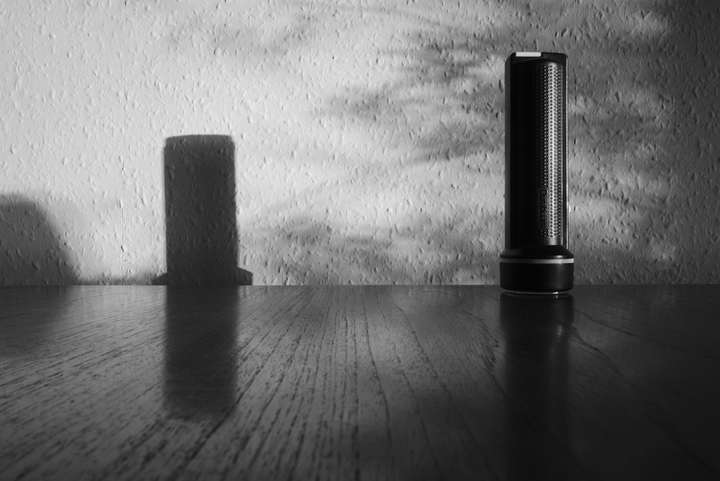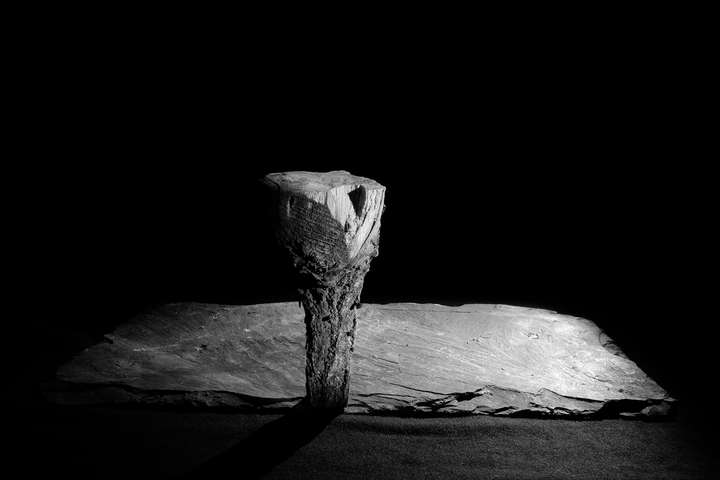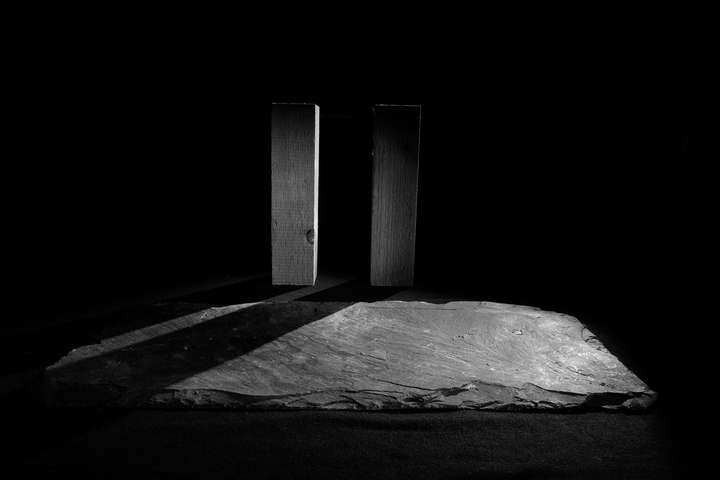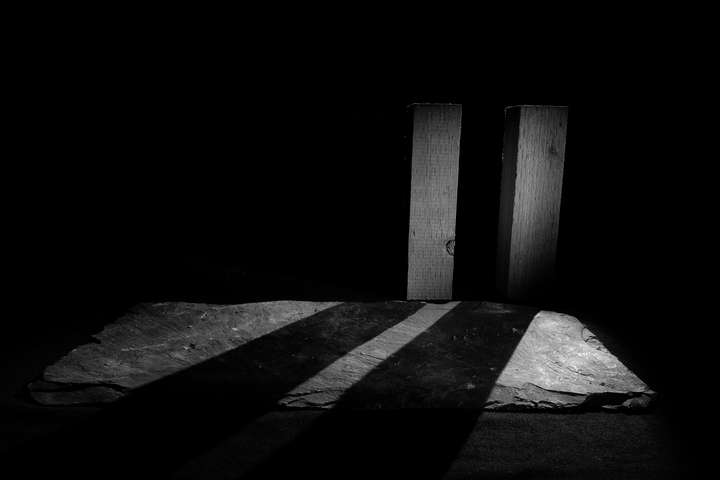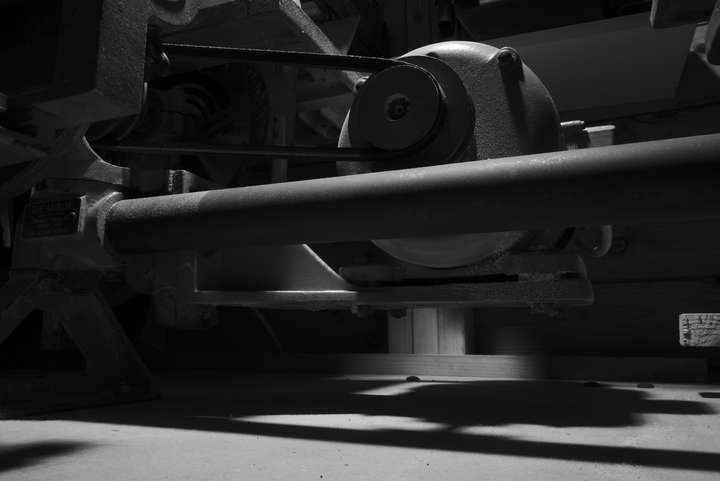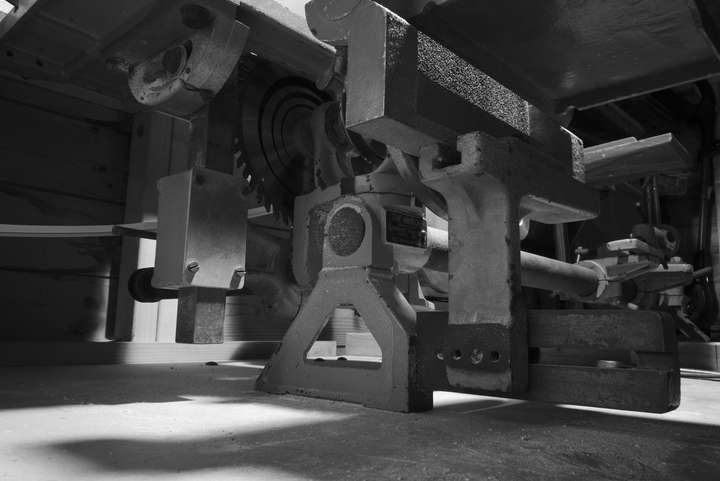
Small Spaces
SMALL SPACES
The set model is a familiar object used by designers as part of the process of developing, communicating and sometimes archiving scenic design ideas. ‘Peep boxes’ are sometimes used as an educational exercise in design training, where the viewer peers into a box where the interior has been treated as a scenographic space. It is less common for miniature scenographies to be part of the performance itself, with stage settings for puppet theatre being the most obvious exception.
The making of miniature worlds does form part of other kinds of artistic work, however, particularly combined with photography. The late Michael Paul Smith photographed combinations of visually highly realistic models and real backgrounds such as distant trees, generally lit by natural daylight to create images of ‘Elgin Park’, a nostalgic take on 1950s middle America. In contrast, Anne Hardy’s photographs of her fictional, constructed spaces are often surreal, but suggest narratives and have theatrical qualities. Graeme Webb’s table-top model worlds are also surreal, and often feature dramatic lighting and miniature figures to suggest scenarios and narratives.
Bringing together some of the above themes, my own research-led work is located at the intersection of photography, model-making, scenography and fine art practices. My aim is to investigate how miniature, found or constructed interior spaces may – through the transformative power of light and photography – be seen as scenographic spaces, in that they have a sense of place and/or of interiority, with the potential to contain action. My project seeks to discover conceptual, aesthetic and technical strategies to make such miniature scenographies that suggest possible narratives or dramatic worlds.
